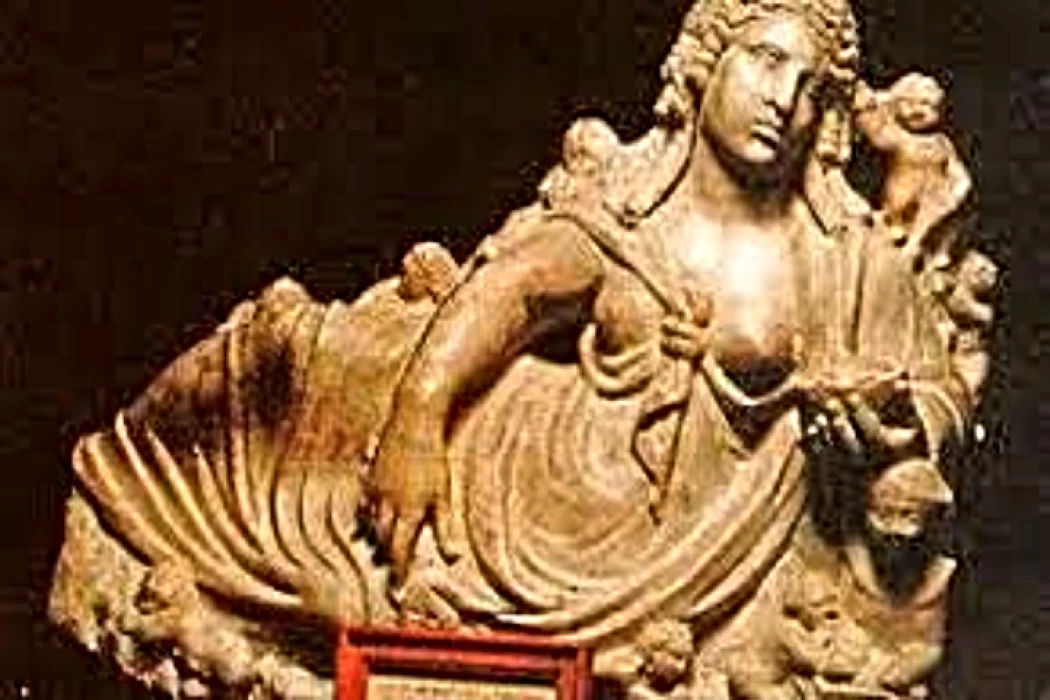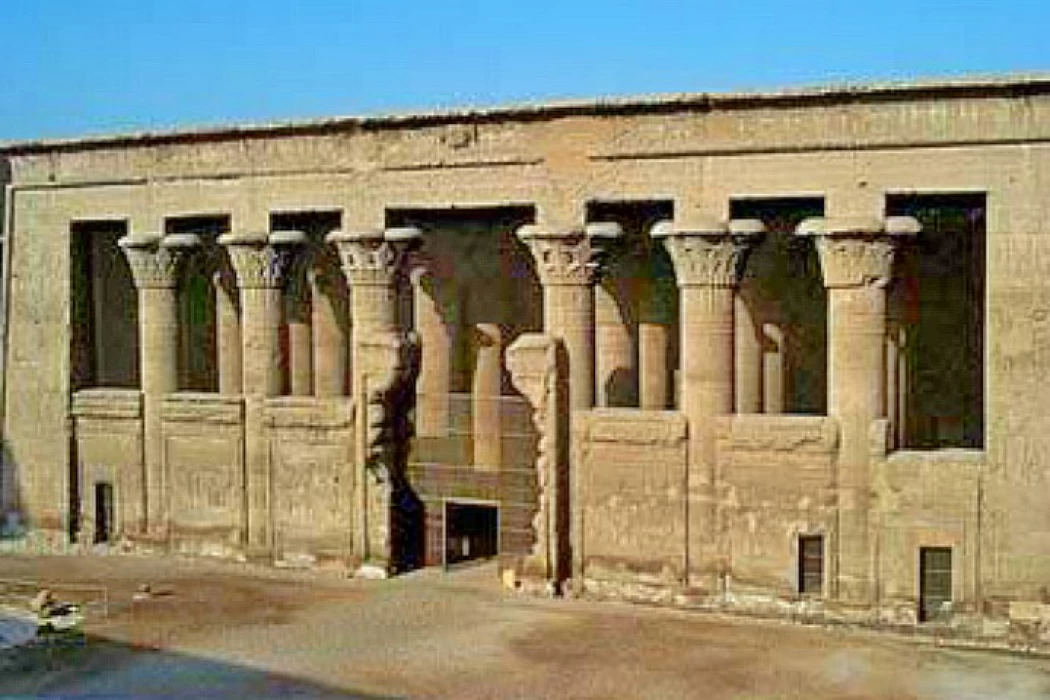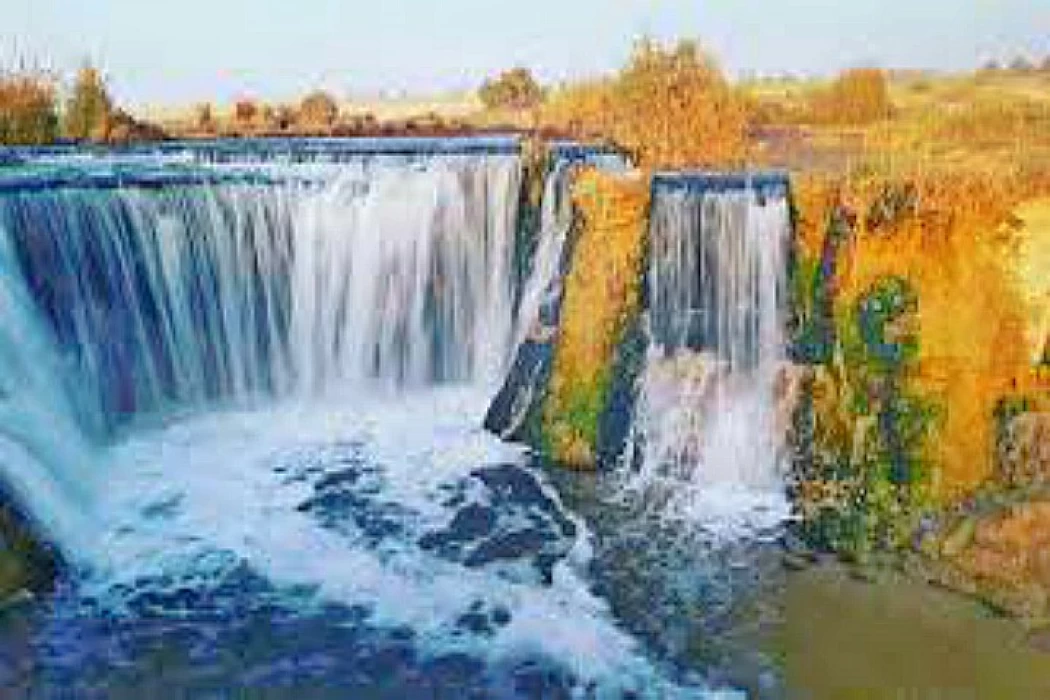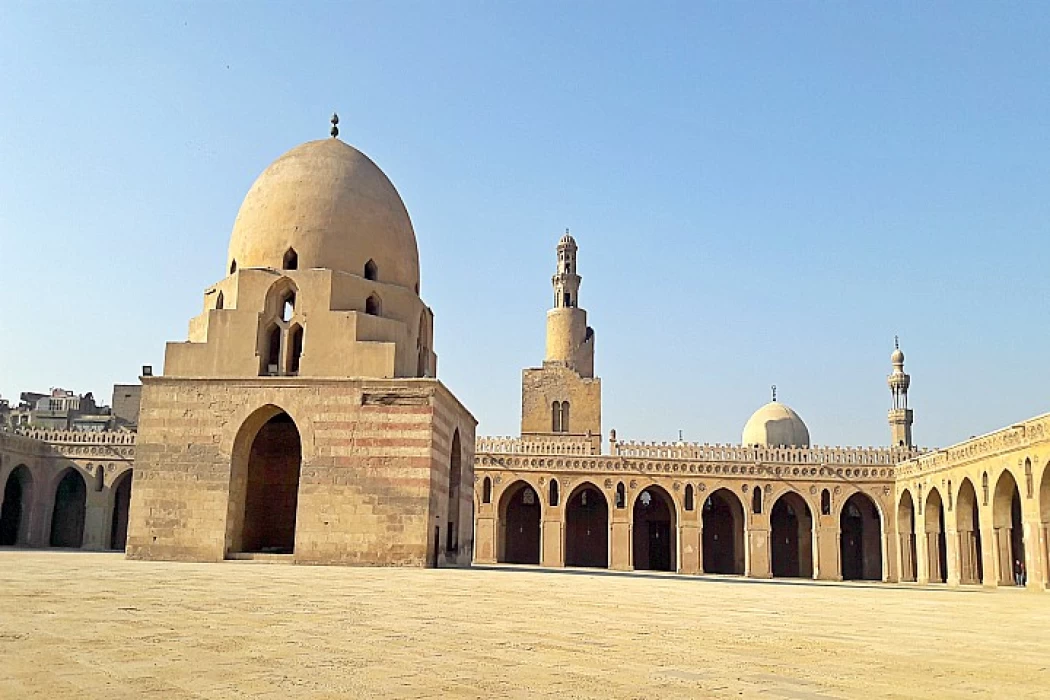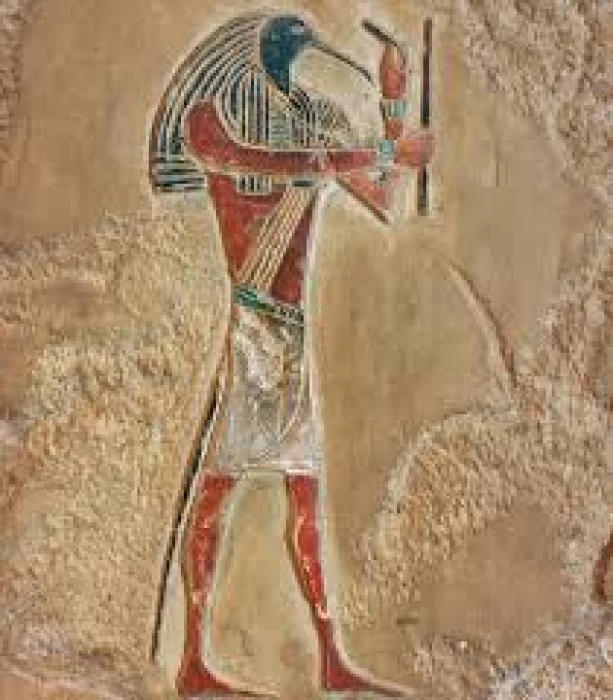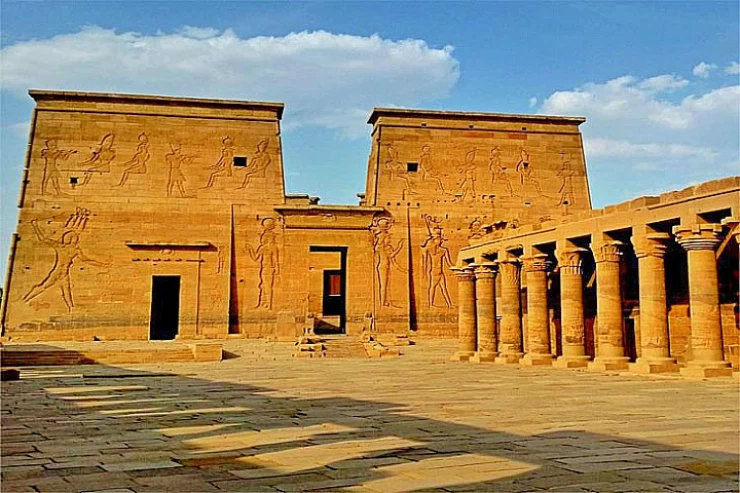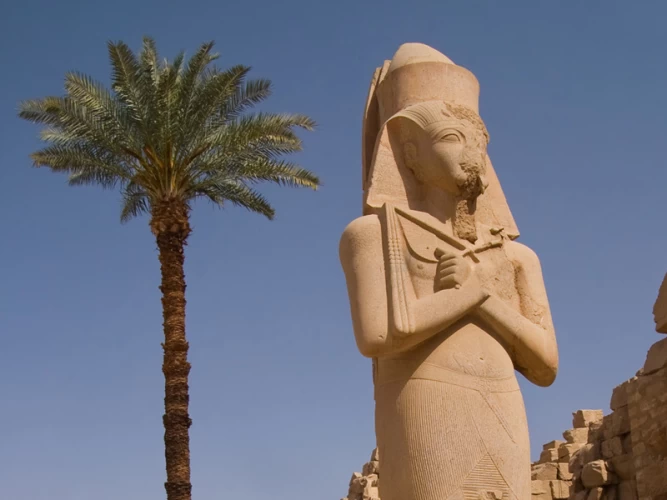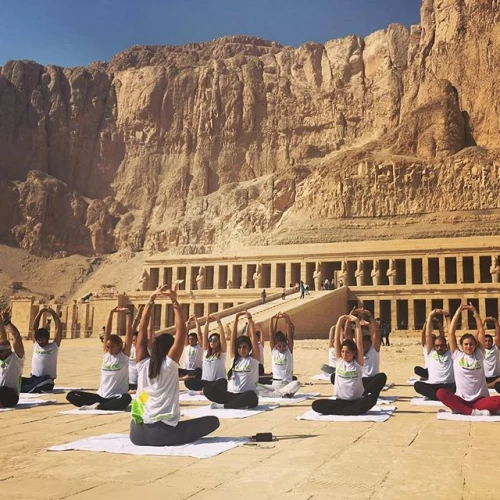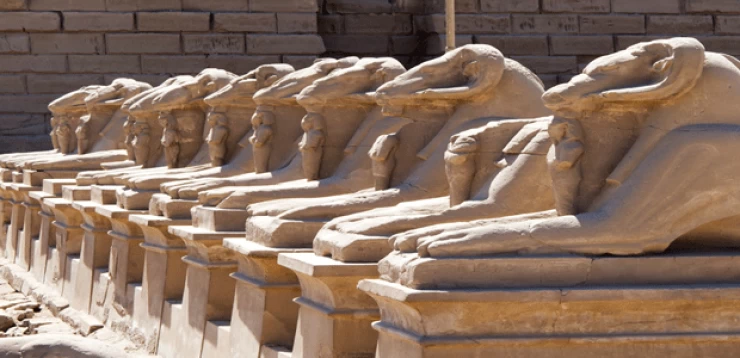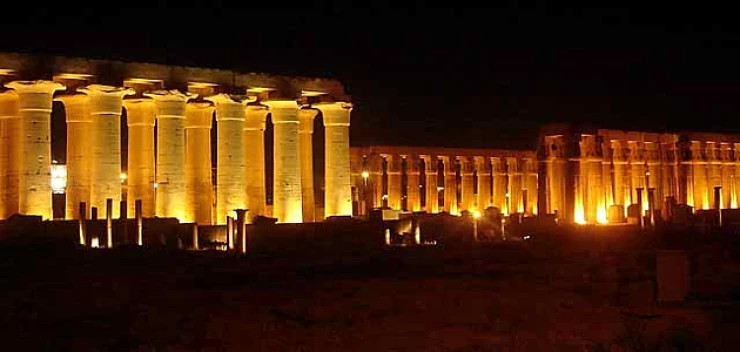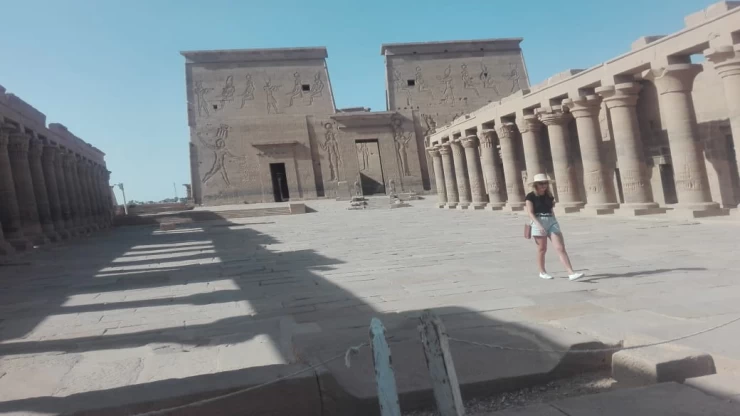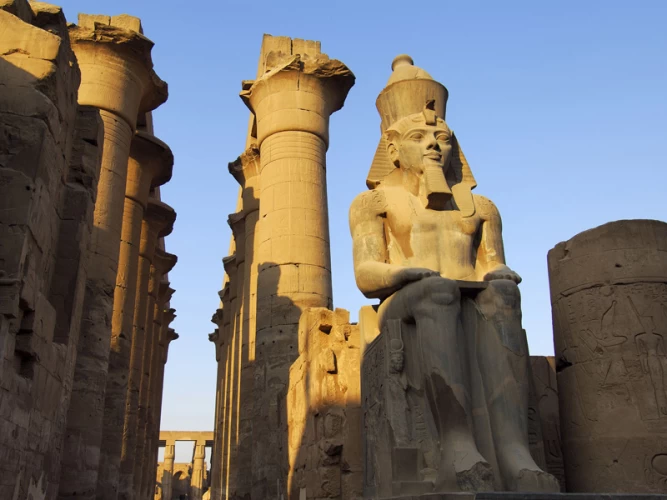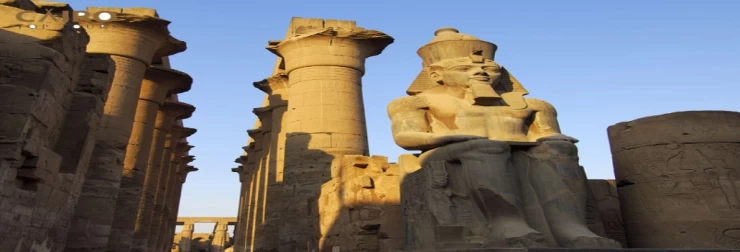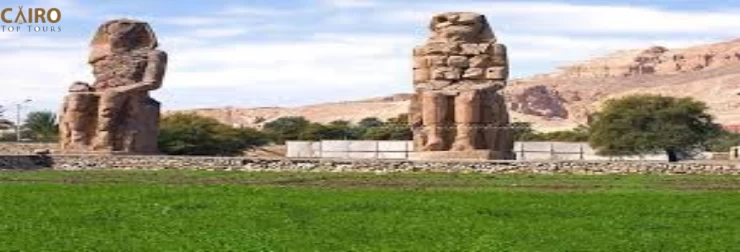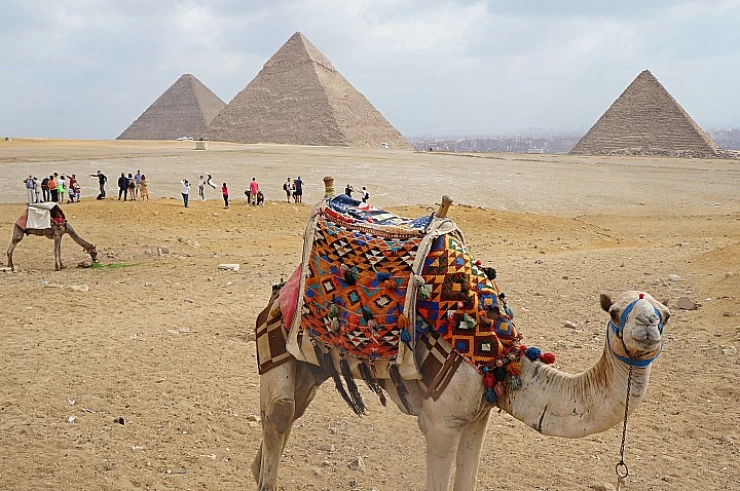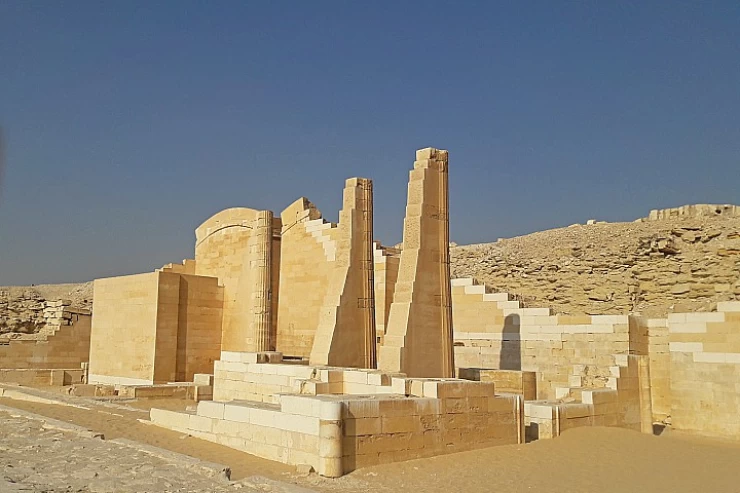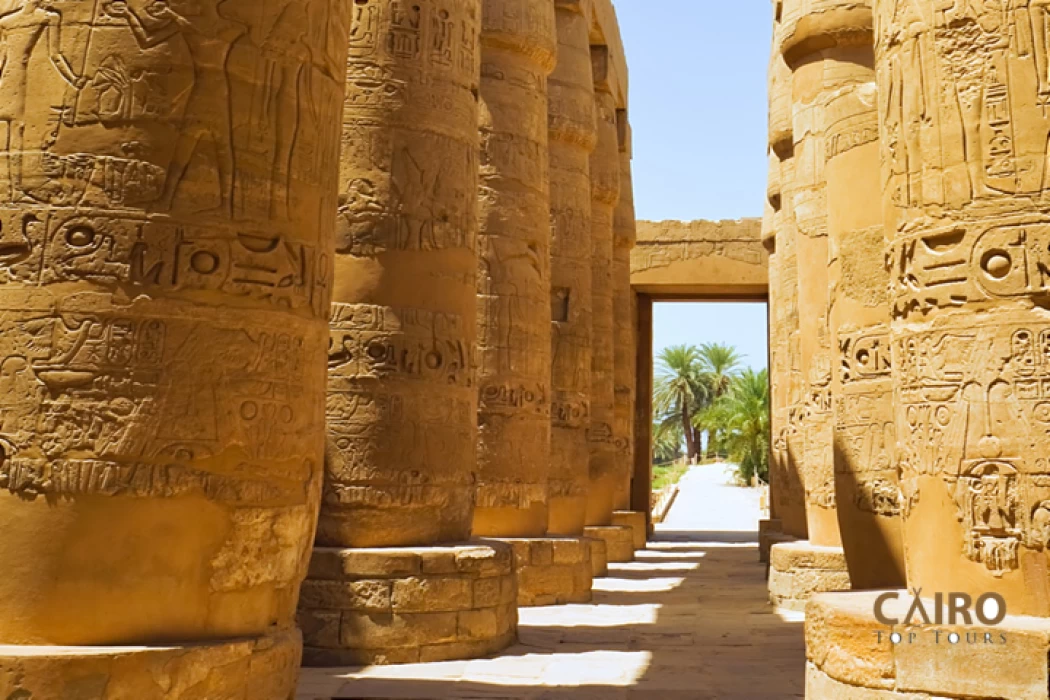
Karnak Temple
Karnak Temple
Luxor stands as one of the most important tourist centers in Egypt. The Pharaonic heritage was preserved for us by the ancient Egyptians. It includes a variety of temples and monuments, big and small, for different dynasties, hence making it a diversified tourist place.
Not just a temple but a group of temples called Karnak. It was built for the god Amun-Ra, along with the goddess Mut and their son Khonsu, which is called the divine Trinity, and each of them had their temple.
Why is this temple called Karnak? Does it have other names?
This name is of Arabic origin, as the name Karnak goes back to the word Khurnak, which means a fortified city, but it was called by several different names in different eras.
For example, it was called Bar Amun, which means the house of Amun, but in the Middle Kingdom, it was called by a different name, which is Ibit Sut, which means the most chosen place, but this name is not confirmed, but they found it on one of the walls of a temple of King Senwosret I in the city of Pelon III.
That temple was also called by other names in different centuries, such as Nisut-Toa or Ibet Iset, and these two words mean the throne of the state or the most wonderful residence, and many other names were named over the ages until it was called by the Arabic name, which is the name of Karnak. As for the other names, it was called by these names in the belief of the ancient Egyptians that the god Ptah stood on the hill and created humans and everything.
They also believed that the temple was raised to serve as a site of communication between the ancient Egyptians and the god Amun, an important place for the worship of pharaohs. The ancient Egyptians traditionally placed stones between almost any two halls they would raise.
Hor Moheb filled his three edifices with remnants of Akhenaten's temple, which he destroyed, and Senwosret I filled one of his edifices with many stones.
History of the temple's construction
In the Middle Kingdom
The temple construction continued for generations, hence showing that its foundations can be laid back to different eras, with the earliest evidence being traced to the Middle Kingdom in the time of the Eleventh Dynasty. For the kings of this dynasty, Karnak was an important religious city. Amun worship was highly respectable lands, and this was before the unification of the country once again; after the unification brought stronger gravity for Amun worship, in fact, the latest edition of merging him with Ra, the sun god, would give him both respect and power—the beginning of Amun-Ra.
Aside from the White Chapel of Senwosret and a large courtyard dating to the Middle Kingdom, Karnak Temple includes other archaeological monuments, which is why Senwosret is considered to be the first king to have built Karnak Temple with limestone, the very same resource with which he built most of ancient Egypt's grand edifices like pyramids and many temples.
In the New Kingdom
Karnak temple was built for Amun, so the earliest dynasty that took an interest in augmenting the temple was the eighteenth dynasty, which merged Amun and Ra and became one with Amun-Ra as a deity, including the nineteenth dynasty, which became popular because of military and architectural expansions. Thus, they showed a lot of concern about the temple of Amun, for whom they performed wars against the foreign threat to ancient Egypt.
Karnak temple was built for Amun, which was the first dynasty that showed interest in expanding this temple. They were the eighteenth dynasty that linked Amun with Ra and called the deity Amun-Ra, and added to that, the nineteenth dynasty, whose fame was military and architectural expansion; thus, they cared very much for the temple of Amun, who was a protector in their wars against internal danger to ancient Egypt.
As for the New Kingdom, Amenhotep I was the first to lay the cornerstone for the building of the temple in the New Kingdom on the same spot on which they constructed the ancient temple in the Middle Kingdom. The kings, following Amenhotep, have added a great deal to this temple, such as Thutmose I, who built two red granite obelisks, one of which remains present to this day, as well as a column hall.
Then came the great Queen Hatshepsut, who built columns and two famous obelisks there, one of which is in Karnak and is one of the tallest obelisks there and reaches a length of about 30 m. She also made some other extensions, like some tombs
When King Thutmose III came and built palaces around the obelisk of Hatshepsut to protect the obelisks at that time, he built these palaces from a different material, which is adobe bricks, and built the two halls of the annals, and this place for Thutmose is still until now.
After that, King Akhenaten became the first king who called for the worship of the god Aten and was the first king to call for monotheism, but his idea did not last long, as the temple he built in Karnak was demolished, and the worship of Amun returned, and they neglected after that interest in the Karnak region until King Hor Mahab came and built the three edifices after he tried to appease the priests who were preventing anyone from building a temple or obelisk in the Karnak area.
In the nineteenth dynasty, many things were built for kings like Seti I and Ramses II, but Merneptah added an inscription on his victories against the Mediterranean, but a large part of this inscription has been lost.
King Seti II built two large obelisks and a shrine on the road leading to the temple of Luxor, near which there was also a chapel for Amun, his wife, and his son.
In the Twentieth Dynasty, a temple to the god Khonsu was built in the reign of Ramses III and IV, a temple similar to the mortuary temple of Ramses in southern Thebes, and the late Twentieth Dynasty, Amenhotep and Ramses IX took care of the temple.
In the time of the Twenty-second Dynasty, columns were built, and a new gate was erected to replace the old gate, while King Shasheng I inscribed many inscriptions about his military conquests in various nations beyond Egypt, such as Syria and Palestine. Afterward, the fame of the Karnak Temple started to recede with the coming of King Taharka, who is said to be the only king during the Twenty-fifth Dynasty who took an interest in the Karnak Temple and built an edifice by his name.
In the thirtieth Dynasty, King Nakhbitu built a large gate and completed what was done during the twenty-second Dynasty.
Era after the Pharaohs
During the Ptolemaic era, King Philip I changed the temple of Thutmose and built a red granite shrine in its place.
As for the Roman era, Emperor Augustus was the one who was interested in the construction of buildings belonging to the god Khonsu, so this emperor added many improvements and shrines, and other emperors did not change anything inside this temple despite the additions that were made in other areas.
Until the Christian era came, especially during the reign of Emperor Theodosius, who ordered the closing of all temples, which led to the ignoring of anything related to Karnak Temple and any other temple in Egypt.
The ten halls in the temple
The first hall, although it is the first hall in the temple, is, in chronological terms, the last to be built, as historians suggest that it was built by King Nakhbitu of the Thirtieth Dynasty.
The second hall has many changes in different eras. It was built by King Hor Mahab and before him King Ramses I, but an inscription was discovered in the name of Ramses II, and the name of Ramses VI was added to the base, and Ptolemy VI put some additions that highlight the Greek side of it. The most special feature of this hall is the presence of a statue of Ramses II of pink granite that is more than 200 meters long. As for the gate of the hall, it belongs to King Nakhtabu, but Bismatik II came and changed some things in it.
Amenhotep built the third hall, while the fourth and fifth halls were built by King Thutmose I, but Thutmose III built the seventh and sixth halls, which are considered the smallest of the ten, and Hatshepsut, who built the eighth hall, the last two halls were for King Hor Mahab.
Latest Articles
Admin
The Graeco-Roman Museum
The Greco-Roman Museum of Alexandria is Egypt's most important archaeological museum, displaying a wide and impressive array of antiquities of the Roman and Greek periods, a testament to Alexandria as a hub of culture and civilization in the ancient world.
Admin
Temple of Khnum
The Temple of Khnum in Esna is a great religious monument that stands as a living record of the excellence of Egyptian artists and priests during the Ptolemaic and Roman eras and should attract every lover of Egyptian history and civilization.
Admin
Beni Hassan Tombs
The tombs of Beni Hassan are among the most prominent evidence of the greatness of ancient Egyptian civilization, as they reflect the Egyptians' mastery of architecture and sculpture, as well as the minute details documenting aspects of their daily life and religious beliefs. These tombs, which date back to the Middle Kingdom, are not just burial sites but archaeological treasures that reveal the nature of Egyptian society at the time as well as its political and economic relations.
Admin
Wadi El Rayan
Wadi El-Rayan is one of the most important natural tourist attractions in Egypt, especially in Fayoum, where there are many wonderful places such as waterfalls and springs for medical tourism, as well as mountains for safari and camping.
Admin
Muslim Conquest in Egypt
Egypt became part of the Islamic world and played a pivotal role in Islamic and Arab history. The conquest had a different aspect than many conquests, as it was characterized by organization and negotiation, as well as military power.
Admin
God Thoth
Thoth served as the spiritual representation in Egyptian mythology whose divine nature embodied reason as well as justice and eternal wisdom. The legacy from Thoth spread throughout thinking, religion and science, thus preserving his name in Egyptian and Greek philosophical works.
